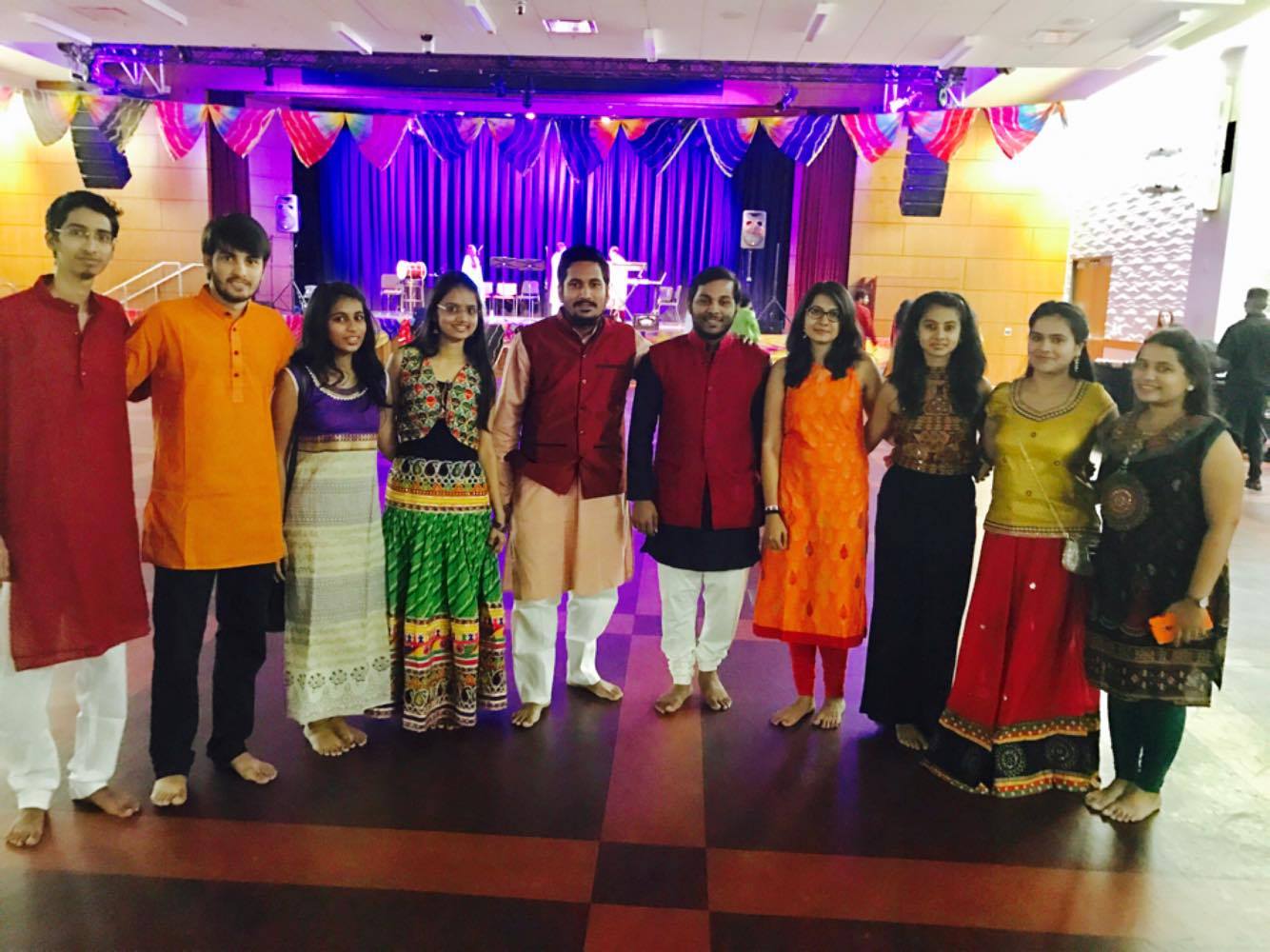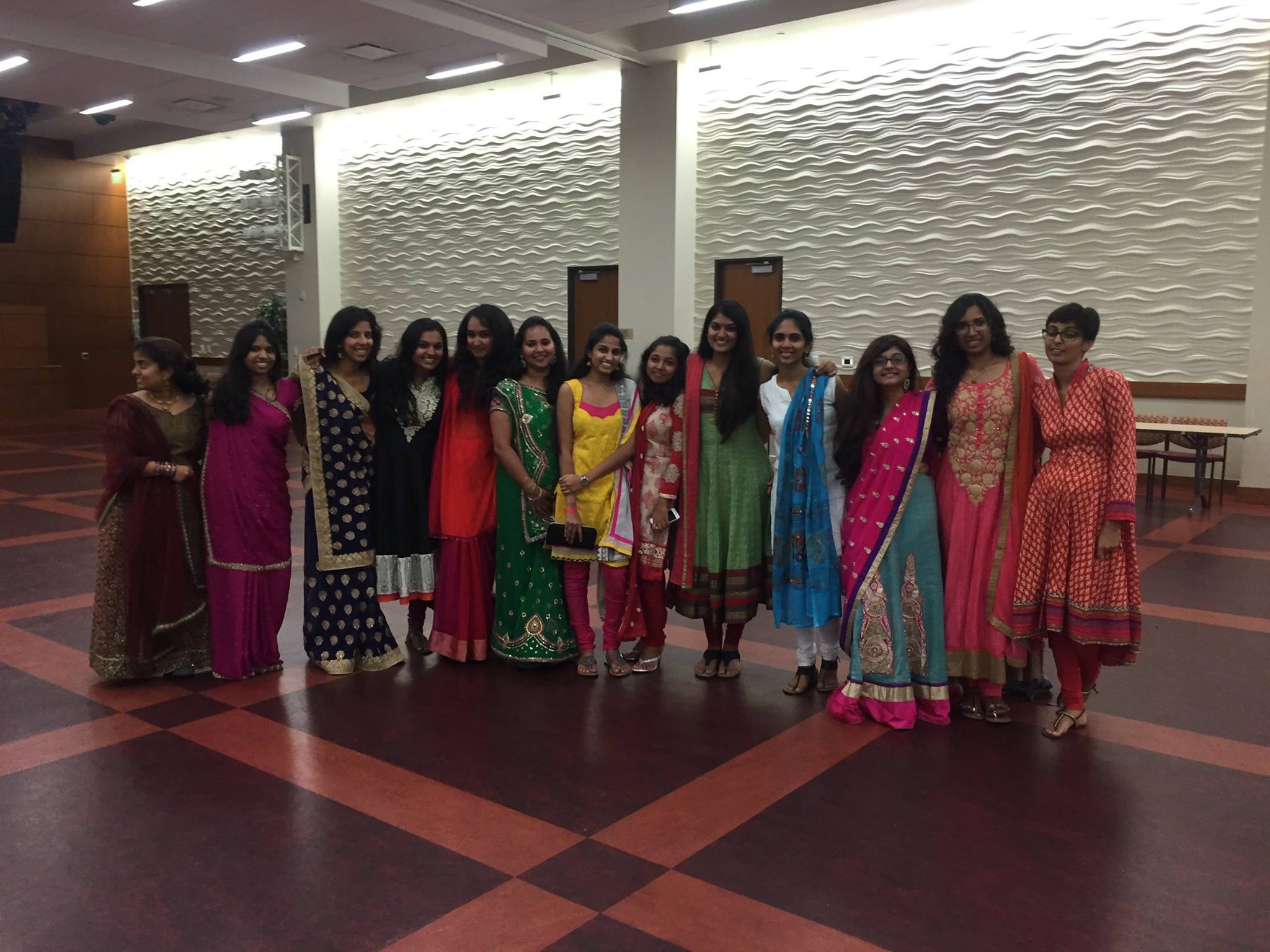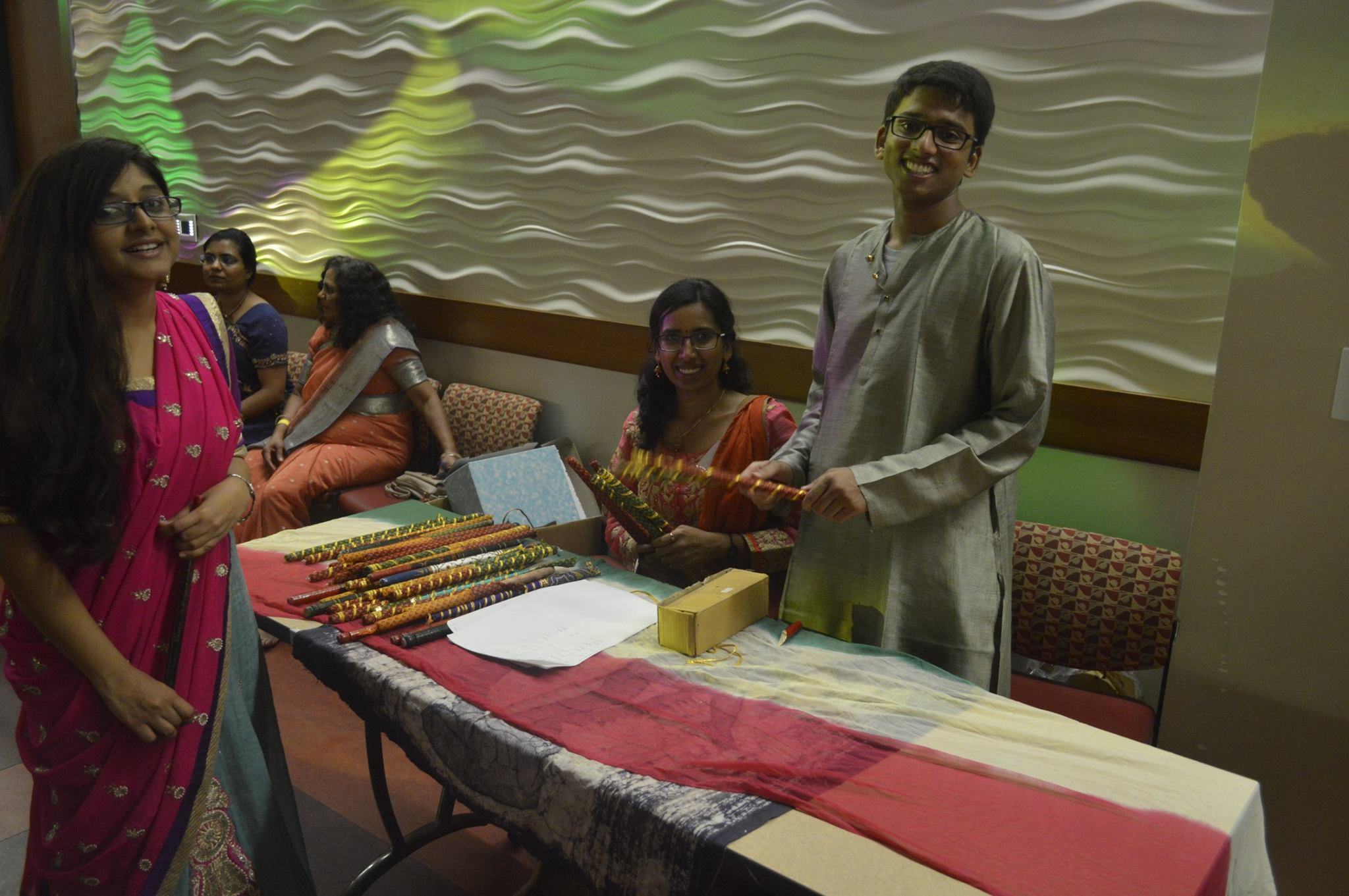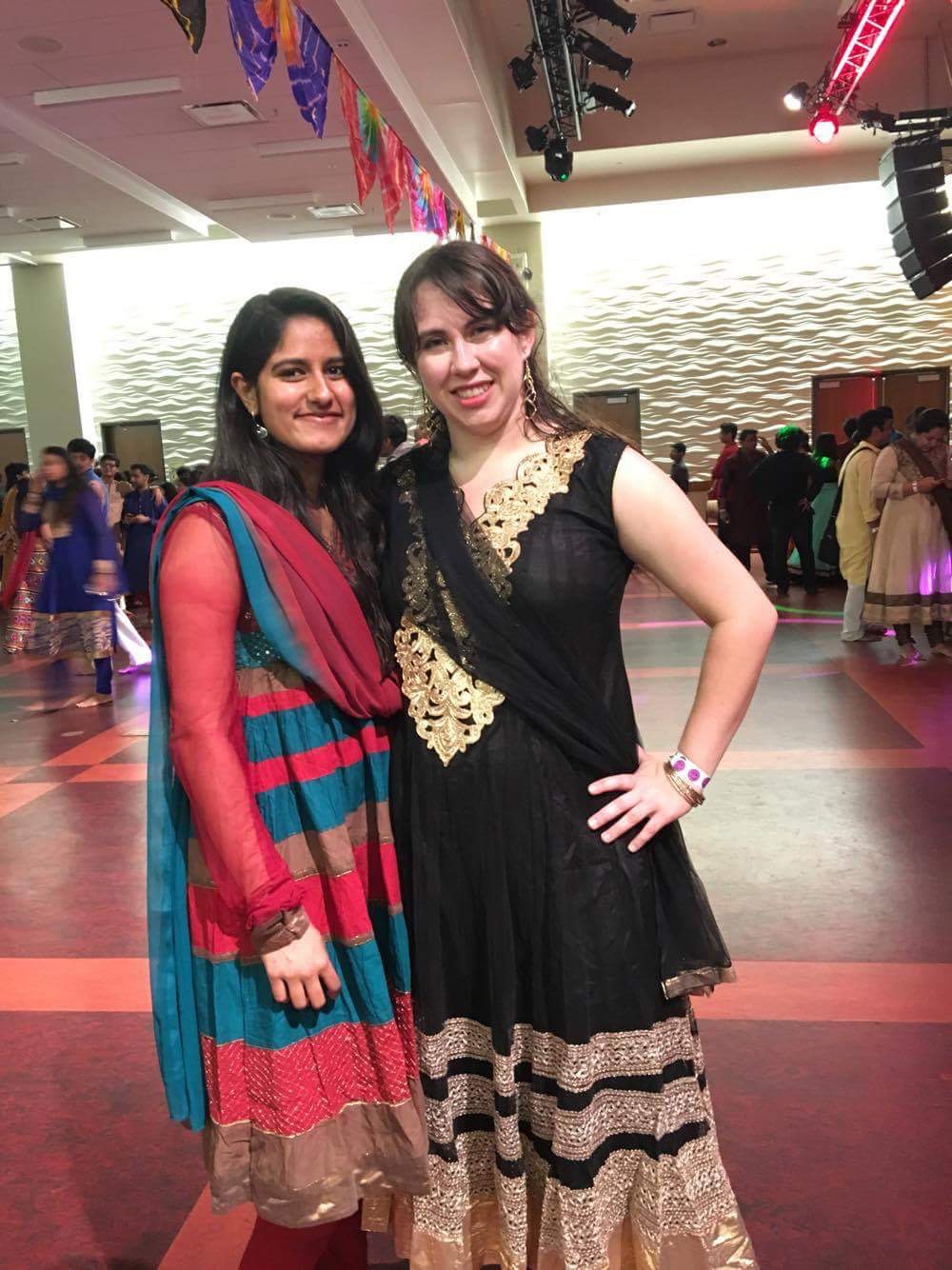By Audrey Moore
“Sanedo!”
“Sanedo!”
“Sanedo!”
The crowd begged the live band to play the family-favorite tune, an upbeat Garba song that involved sitting patiently until the magic words “Sanedo lal lal sanedo” blasted out over the speakers and across the audience.
When the singer reached the refrain, everyone sprung up from their spots and landed spinning, dancing with swift turns, swinging arms and short, energetic hops. Colorful skirts and suave kurthas amassed into one giant kaleidoscope of dancers, all shouting and singing along as loudly as they possibly could. In the middle of it all, I was there.
Compared to previous years, this Sanedo was cut short: we didn’t get the chance to sit down again and repeat the excitement all over, but I didn’t care. I had spent the entire night skipping and twirling in my black and gold mesh anarkali with bare feet, and needed the break. This was my final Garba Night before my graduation in December, and it did not disappoint.
Every year, the Association of Indian Students (AIS) hosts this big-hit event in the Ronald Tutor Campus Center Ballroom as part of the traditional celebration of Navratri, literally translating to a “nine nights” festival honoring the Hindu deity Durga (also known as Shakti). This year, the religious festival falls on October 1 through October 10.
While many aspects about the Navratri rituals intrigue my curiosity, nothing has captivated my attention as much as the fun-filled tradition hailing from India’s northwestern province of Gujarat: garba.
Garba is a graceful, energetic form of dance that rhythmically moves around a circle to the sound of drums, synthesizers, and local vocalists. In very traditional cases, a lit lamp or icon of the goddess Durga is placed in the center of the circle, but for the AIS Garba Night, circles were left empty to allow more people to join or form new groups. Women dress in bright ghagra cholis (traditional three-piece skirted outfits) adorned with bold patterns, heavy beads, and even mirror-work embroidered into the cloth, while men wear flared pyjama pants, a short and rounded kurtha (traditional tunic), and colorfully beaded vests.
As if the sparkling outfits weren’t enough, the garba frenzy is augmented by the immense amount of energy put in to the dance moves themselves. If you’re not constantly hopping or skipping, you’re not dancing garba properly. If you’re not waving your hands with graceful wrist-turns atop, or bringing them together every third beat to strike out a clap, you’re not dancing garba properly. Most importantly, if you’re not spinning (namely, moving around the circle), you’re definitely not dancing garba properly. For beginners, there is dandiya, which is basically garba combined with what look like colorful drum sticks (if you haven’t yet noticed, India is big on colors) and less skipping. Couples or groups dance in a circle to garba rhythms while striking their partners’ dandiya sticks, before spinning on to their next partner and repeating the process.
Both dances are intense cardio workouts, but the dancing aspect makes it extremely fun – almost addictive (think Zumba). Perhaps that is why Indians refer to dancing garba as “playing” garba. Even for myself, a yearly attendee of the AIS Garba Nights, “playing” garba wore me out. Near the second half of the event, I moved towards the front of the Ballroom to dance by the stage and join a more advanced group. I observed their movements for a few minutes, then hopped in: left leg up, clap underneath; right leg up, clap underneath; left leg again; right leg again; turn, spin, skip for four beats. Repeat until you’re out of breath.
And truly, the night was breathtaking. I met plenty of new people, reunited with old friends and AIS alumni, and danced – or, played – my heart out. What surprised me most were the amount of non-Indian students like myself I saw at the event. Chinese and other East Asian students donned ghagra cholis and ate kofta. I saw a group of Caucasian women dressed in lovely kurthis and other traditional attire at the top of the Sample Hall stairs, making sure they had their tickets ready before the event.
But what inspired me most was seeing USC graduates returning back, even if just for the night, to celebrate and dance garba with their Trojan friends – a second family far from home. I hope next year to do the same, and to see even more diversity at the event. Again I’ll be dressed in a traditional Indian outfit, again overflowing with excitement and spending it all throughout the night while dancing, and again I’ll have that same sense of Trojan pride and family that USC has always provided.
Fight On!






Featured image from Wikimedia Commons
Audrey is a fourth-year undergraduate studying International Relations (Global Business), with a minor in Spanish, and is loving all the diverse cultures found across the USC campus. With two years of experience as a One-on-One Conversation Partner, Audrey has a love for languages and teaching: she has ESL tutoring experience from high school, as well as knowledge on the TOEFL test and excellent oral presentation/interview tips. She has visited 21 countries outside the United States, knows small amounts of 22 different languages, and is bilingual in Spanish. For fun, she enjoys playing cricket on Friday nights, dancing to her favorite songs on Spotify, and practicing amateur photography.

